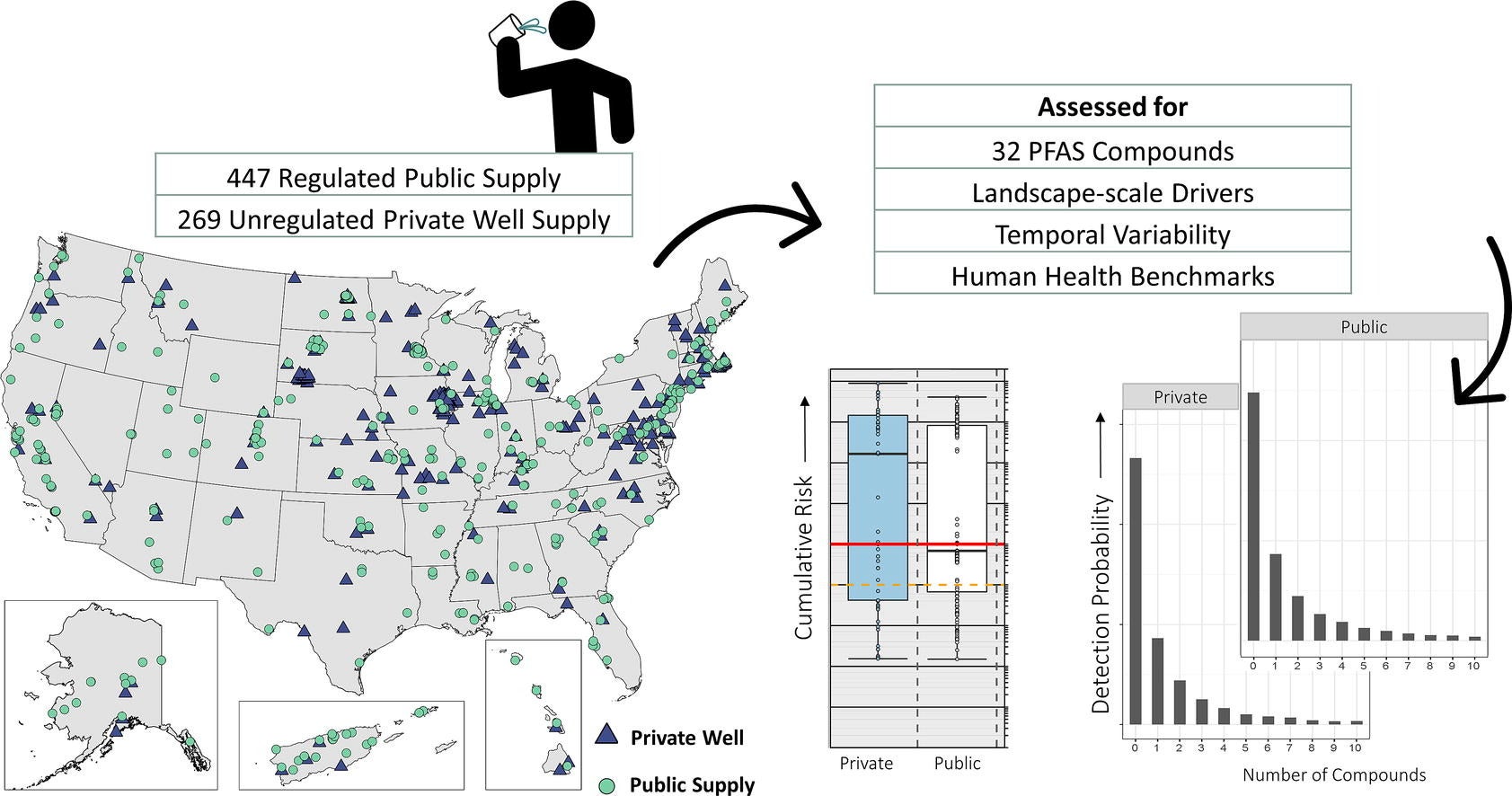Nearly half of US tap water contains ‘forever chemicals’
Urban areas more exposed to the chemical substances in drinking water
Your support helps us to tell the story
From reproductive rights to climate change to Big Tech, The Independent is on the ground when the story is developing. Whether it's investigating the financials of Elon Musk's pro-Trump PAC or producing our latest documentary, 'The A Word', which shines a light on the American women fighting for reproductive rights, we know how important it is to parse out the facts from the messaging.
At such a critical moment in US history, we need reporters on the ground. Your donation allows us to keep sending journalists to speak to both sides of the story.
The Independent is trusted by Americans across the entire political spectrum. And unlike many other quality news outlets, we choose not to lock Americans out of our reporting and analysis with paywalls. We believe quality journalism should be available to everyone, paid for by those who can afford it.
Your support makes all the difference.Nearly half the tap water in the United States contains one or more “forever chemicals” which are linked to health issues like infertility and cancer.
At least 45 per cent of the nation’s tap water is impacted, the US Geological Survey (USGS), the country’s largest water, earth, and biological science and civilian mapping agency, said on Wednesday.
While there are more than 12,000 types of per- and polyfluorinated alkyl substances, or PFAS, in existence not all can be detected with current testing. USGS tested drinking water for 32 types of PFAS.
Cities and locations close to “potential sources” of PFAS were most contaminated by the chemicals, found in a glut of everyday products from takeout containers to non-stick cookware and fire-fighting foam.
The most exposed regions included the Great Plains, Great Lakes, Eastern Seaboard, and central and southern parts of California, the study found. According to USGS, the probability of PFAS not being in tap water is about 75 per cent in rural areas and around 25 per cent in urban areas.
Exposure to certain levels of PFAS may lead to decreased fertility or increased high blood pressure in pregnant women, the US Environmental Protection Agency (EPA) says.
The chemical substances are also linked to developmental effects in children and increased risk of some cancers including prostate, kidney, and testicular. Research is ongoing into other potential health impacts.
PFAS are known as “forever chemicals” due to the length of time they take to break down in the environment.
The USGS study is the first sweeping assessment of PFAS contamination in America’s drinking water across both private and government-regulated public water supplies.

Tap water samples were taken at 716 locations including in protected lands, residential and rural areas with no known PFAS sources, and locations with PFAS sources like industry or waste sites. The data, collected between 2016 and 2021, was used to estimate potential PFAS contamination across the country.
“USGS scientists tested water collected directly from people’s kitchen sinks across the nation, providing the most comprehensive study to date on PFAS in tap water from both private wells and public supplies,” said USGS research hydrologist Kelly Smalling, the study’s lead author.
“The study estimates that at least one type of PFAS – of those that were monitored – could be present in nearly half of the tap water in the US.”
The most frequently detected compounds were PFBS, PFHxS and PFOA, according to the research. Levels of PFOS and PFOA exceeded EPA health advisories in every sample where they were detected by USGS.




Join our commenting forum
Join thought-provoking conversations, follow other Independent readers and see their replies
Comments